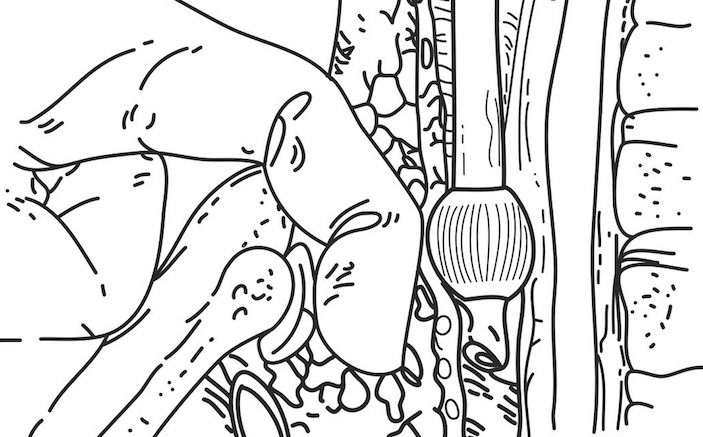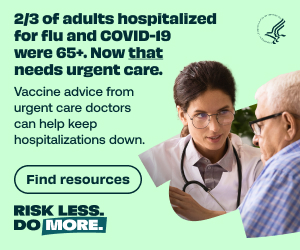Real-world strategies for handling this difficult airway
Emergency providers are masters of airway management, no matter the condition or situation. One airway in particular can lead to significant trepidation: the tracheostomy. Patients with tracheostomies can suffer several complications, some which may be minor, while others are life-threatening.
Before we continue, several key concepts of the tracheostomy must be understood. A tracheostomy is usually placed for chronic mechanical ventilation, chronic poor swallowing, upper airway obstruction (such as mass), and failure to protect the airway [1-4]. Tracheostomy does improve ventilation, though the timing of placement in ventilator-dependent patients is controversial [4,5]. The American College of Chest Physicians recommends tracheostomy placement with mechanical ventilation greater than 21 days, and tracheostomy can improve comfort and patient ability to perform daily activities [6-8].
Methods and Components
Several methods of tracheostomy placement exist, with the majority placed surgically or percutaneously. We will not dive into the features of each operation, as they can be complex. Most tracheostomies are placed surgically, with stay sutures tagging the skin in the early stages of surgery and the production of a skin “flap” for site access [7-10]. The percutaneous route includes a modified Seldinger technique. Each of these tracts requires 7-10 days to mature [7-10]. A laryngectomy differs from a tracheostomy in that the laryngectomy involves complete removal of the larynx and airway separation from the mouth, nose, and esophagus [7,10-13]. This makes oral intubation impossible; however, oral intubation is possible in the tracheostomy patient. Covering the stoma in the laryngectomy patient will produce hypoxia, but not in the tracheostomy patient [7,10-13]. Key components of the tracheostomy are shown in Table 1 and Figure 1 (below). These features include the outer size diameter, brand/type, cuff, inner cannula, outer cannula, and obturator [1,7,10-14].


Case of Cardiac Arrest: The EMS phone suddenly interrupts your conversation with one of the nurses. The crew sounds anxious, as they were called to the scene of a patient found down. The patient was not breathing and unresponsive in PEA, so they started CPR and provided epinephrine. The patient rolls in, and you notice he has a tracheostomy. EMS is currently bagging him over the tracheostomy site.
The management of the tracheostomy patient in cardiac arrest requires several steps [1,8,9,11,12]:
- Begin chest compressions and assess the stoma/trach site while continuing ACLS measures. Standard oral maneuvers for oxygenation of the mouth may be used (BVM, LMA, intubation) while covering the stoma.
- If the stoma is patent, you may use this for ventilation with pediatric facemask, LMA, or intubation.
- If the stoma is not patent, the upper airway may be utilized for oxygenation and ventilation. Ensure the current trach cuff is deflated if trying to ventilate by the upper airway, or better yet, prepare to remove the current trach tube and orally intubate.
- If attempting oral intubation, use an uncut endotracheal tube (ETT) and advance the cuff 2 cm beyond stoma site while covering stoma site.
- If attempting stoma site intubation, use a small tracheostomy tube or 5.5/6.0 endotracheal tube. Ensure you have secondary airway equipment such as cricothyrotomy equipment and fiberoptic equipment available.
You intubate the trach site with a 6.0 tube and obtain ROSC. The patient is admitted to the MICU.
Complications
There are a number of complications that may arise from the tracheostomy, many of which are life-threatening. The primary complications include 1) obstruction, 2) decannulation, and 3) bleeding. Of note, these patients should be cared for in the resuscitation area of the ED, with several supplies and equipment available: personal protective equipment, suction supplies, replacement ETT/trach, Yankauer suction, tube ties, supplemental oxygen, bougie, and cricothyrotomy equipment [1,8,11,15].
In the initial assessment, there are three key questions: 1) How mature is the stoma? 2) What size is the current tracheostomy? 3) Why was the tracheostomy placed [1,8,11,12]? Other important factors include cuff presence, brand of tube/trach, prior issues/complications, fever, secretion changes, and bleeding [1,8,11].
Case 2: A 62-year-old female and her husband walk into triage, with a chief complaint of tracheostomy dislodgement. The charge nurse runs back to grab you, and the patient is just now being guided back to room one. Her vital signs are normal, and she is in no distress. Her husband states her tube fell out one hour ago. It was placed three weeks ago for upper airway malignancy. What should you do?
Tube Obstruction and Dislodgement
The patient in respiratory distress requires immediate care. Close evaluation of the chest, oxygen saturation, distal perfusion, mental status, and hemodynamic status are important, while obtaining vascular access. Of note, knowledge of placement date is essential, as trachs less than 7 days old require ENT/surgical consultation due to the immature site and risk of false passage with reinsertion [1,7,8,12,15]. With tube obstruction, the inner cannula should be removed and suction catheter passed as a first step. If the suction catheter does not pass, reinsertion will be needed with a different trach. Reinsertion by the emergency provider can be considered if the site is older than 7 days and a catheter cannot be passed [1,7,8,11,12,15].
Tube dislodgement or decannulation is common. Loose trach ties, neck edema, coughing, edema, patient agitation, poor placement, and obesity may all cause dislodgement. Again, sites less than 7 days old have a high risk of false passage creation with tube reinsertion. Patients with sites less than 7 days of age require ENT consultation for replacement [1,8,12,16-19]. Another important consideration is the reason behind the trach placement. Upper airway obstruction or abnormality may create difficulty with oral intubation if needed. On the other hand, if the upper airway is relatively normal and the site is immature, the patient can be orally intubated. Importantly, a stoma greater than one week in age may reduce in size by half within 12 hours of dislodgment [1,8,12,16-19]. Patients with a mature trach site may require dilation with a smaller tube. A bougie may be placed first into the tract to ensure the tract remains open. An ETT or trach can then be placed over the bougie in a Seldinger technique, with the tube pointed perpendicular to the stoma [12,15,16,19]. Once in the stoma, the tube can be redirected gently downward following the curve of the neck. The bougie can be removed once the trach is in place and inner cannula connected. Do not place the ETT or trach too deep. Advance 2 cm past the stoma site, and obtain a chest x-ray for confirmation [1,8,12,19]. Waveform capnography can also assist in ensuring placement.
The following is a general approach to airway management in tube obstruction or dislodgment [1,8,12]:
- Contact your respiratory therapist and ENT surgeon, obtain airway equipment, and apply oxygen to the patient face and tracheostomy site. If the trach possesses a cuff, deflate the cuff in order to oxygenate via the upper airway.
- Assess trach patency and reason for placement.
- Remove speaking valve/cap and inner cannula if present, then pass a suction catheter. If this passes and the patient improves, the obstruction is likely removed.
- If no improvement occurs and you cannot pass the catheter with the cuff deflated, prepare for removal of the trach.
- If the trach is older than 7 days, the trach can be replaced by the emergency provider.
- If the trach is less than 7 days old, prepare for oral intubation and contact ENT.
- Oral intubation can be done if the upper airway is patent. Cover the stoma site after intubation.
- If the upper airway is obstructed or anatomy abnormal, prepare for difficult airway (Cric set, fiberoptic), and call ENT.
The patient’s site is 3 weeks old, but she appears well. You place a bougie into the site to keep it open, and then use the bougie to guide the patient’s own tracheostomy tube back into place. You call the ENT physician, who says he will see her tomorrow morning.
Your next patient is a 72-year-old male with bleeding from the tracheostomy site for several hours. He is from a skilled nursing facility. He is ventilated with a tracheostomy, which was modified three weeks ago. The nurse this morning noted bleeding from around the trach site. The patient appears hemodynamically stable, though there seems to be a constant stream of bleeding from the trach site. You immediately ask for bilateral IV’s and gather your airway equipment.
Tracheostomy Site Bleeding
Any bleeding from the trach site can be life-threatening. Patients require immediate evaluation in the resuscitation area, along with ENT consultation while in the ED no matter the amount of hemorrhage. The most concerning complication is tracheoinnominate fistula (TIF), which can present with mild bleeding. Mild manipulation may worsen bleeding with TIF.1,8,9,15,16 Trach site bleeding usually requires CT (computed tomography) with IV contrast of the neck and chest. Bleeding is broken into two periods: early versus late [1,8,20-23]. Causes are shown in Table 2.

The approach to tracheostomy bleeding involves several key steps, while ensuring airway equipment is available. Evaluation and management should occur in the resuscitation area. The focus is on diagnosis and management of TIF. Although rare at less than 1% of patients, mortality can reach 100% [1,8,9,21]. TIF is due to tracheostomy erosion into the innominate artery caused by pressure necrosis. Close to 50% of patients experience a “sentinel bleed” in weeks before the major bleed, and this major bleed most commonly occurs in the first 4 weeks after initial placement. The following is an approach to tracheostomy site bleeding [1,8,9,23,24]:
- Assess hemodynamic status and breathing rate, while obtaining IV access and respiratory equipment.
- Consult ENT and cardiothoracic/vascular surgery. Interventional radiology may be needed as well.
- If the patient is stable with low rate of bleeding, inspect trach site and mildly manipulate trach. May suction around site to clear any blood or clots. Bleeding from granulation tissue at site can be cauterized (silver nitrate or cautery).
- If bleeding is not visible at trach site, it is likely due to a cause located deeper in the stoma.
- Brisk bleeding requires resuscitation. Assume TIF until proven otherwise, with several measures to reduce bleeding. First, inflate cuff if present to 50 mL, followed by slowly withdrawing tube while exerting anterior pressure against the trachea. This is shown in Figure 2 (below).
- If this step is ineffective or a cuff is not present, prepare for oral intubation. While intubating the patient orally, withdraw the trach tube. Place a finger into the stoma and down the trachea to hook anteriorly, shown in Figure 3 (below).
- Surgery and embolization may be needed.


The patient’s HR is now 110/min, and you page the ENT and cardiothoracic surgeons. The bleeding continues, and you cannot locate the source. You assume it’s from a TIF, and you inflate the cuff to 50 mL while pulling the tracheostomy back. Bleeding slows with this measure. The ENT surgeon arrives, and he expresses concern over the bleeding. The cardiothoracic surgeon arrives, who agrees with the concern for TIF. They decide to take him to the OR together.
Tracheostomy Site Infection
Infection of the trachea or stoma is most commonly due to contamination. Evaluate for increased erythema, edema, and purulence. Ask other care providers about change in odor, appearance, and drainage. Treatment requires broad spectrum antibiotics, along with silver-containing wound dressings [1,8,24-26]. Unfortunately, a tracheostomy also increases the risk of pneumonia, so have a low threshold for chest x-ray and antibiotics with admission.
Summary
Patients with tracheostomy can present several challenges for emergency physicians. Complications include obstruction, decannulation/dislodgement, bleeding, and infection. Providers should ask why the trach was placed, when it was placed, and trach type/size. Critical patients should be evaluated in the resuscitation area with airway equipment available. Most patients should receive ENT consultation. Trachs less than 7 days are immature, with increased risk of false passage formation. Trachs older than 7 days are more likely mature. Bleeding from the site should be assumed as TIF until proven otherwise. Reviewing these complications and this approach to management can help providers manage this difficult airway.
REFERENCES
- Morris LL, Whitmer A, McIntosh E. Tracheostomy Care and Complications in the Intensive Care Unit. Crit Care Nursing 2013;33(5):18-30.
- Masoudifar M, Aghadavoudi O, Nasrollahi L. Correlation between timing of tracheostomy and duration of mechanical ventilation in patients with potentially normal lungs admitted to intensive care unit. Adv Biomed Res 2012;1:25.
- Esteban A, Anzueto A, Alia I, et al. How is mechanical ventilation employed in the intensive care unit? An international utilization review. Am J Respir Crit Care Med 2000;161(5):1450-1458.
- Ahmed N, Kuo YH. Early versus late tracheostomy in patients with severe traumatic head injury. Surg Infect (Larchmt) 2007;8(3):343-347.
- Arabi YM, Alhashemi JA, Tamim HM, et al. The impact of time to tracheostomy on mechanical ventilation duration, length of stay, and mortality in intensive care unit patients. J Crit Care 2009;24:435-440
- Plummer AL, Gracey DR. Consensus conference on artificial airways in patients receiving mechanical ventilation. Chest 1989;96(1):178-180.
- Bove MJ, Afifi MS. Tracheotomy procedure. In: Morris LL, Afifi MS, eds. Tracheostomies: The Complete Guide. New York, NY: Springer Publishing
Co LLC; 2010:17-40. - Long B, Koyfman A. Resuscitating the tracheostomy patient in the ED. American Journal of Emergency Medicine 2016;34:1148-1155.
- Goldenberg D, Ari EG, Golz A, et al. Tracheotomy complications: a retrospective study of 1130 cases. Otolaryngol Head Neck Surg 2000;123:495-500.
- Ernst A, Silvestri CA, Johnstone D. Interventional pulmonary procedures: guidelines from the American College of Chest Physicians. Chest 2003;123(5):1693-1717.
- El-Sayed IH, et al. Identifying and Improving Knowledge Deficits of Emergency Airway Management of Tracheotomy and Laryngectomy Patients: A Pilot Patient Safety Initiative. Int J Otolaryngology 2010;2010:1-7.
- McGrath BA, Bates L, Atkinson D, Moore JA. National Tracheostomy Safety Project. Multidisciplinary guidelines for the management of tracheostomy and laryngectomy airway emergencies. Anaesthesia 2012 Sep;67(9):1025-41.
- Townsley RB, Baring DE, Clark LJ. Emergency department care of a patient after a total laryngectomy. Eur J Emerg Med 2014 Jun;21(3):164-9.
- Dunn PF, Goulet RL. Endotracheal tubes and airway appliances. Int Anesthesiol Clin 2000;38:65-94.
- D. Doyle J, Scales DC. Tracheostomy. In: Hall JB, Schmidt GA, Kress JP. eds. Principles of Critical Care, 4e. New York, NY: McGraw-Hill; 2015. http://accessmedicine.mhmedical.com/content.aspx?bookid=1340&Sectionid=80032214. Accessed September 24, 2015.
- Epstein SK. Late Complications of Tracheostomy. Respir Care 2005;50(4):542-549.
- Morris LL, Afifi MS. The dreaded false passage: management of tracheostomy tube dislodgement. Emerg Med News 2011;33(8). http://journals.lww.com /em-news/Fulltext/2011/07081/The_Dreaded_False_Passage_Management _of.3.aspx. Accessed Sep 2, 2015.
- O’Connor HH, White AC. Tracheostomy decannulation. Respir Care 2010;55(8):1076-1081.
- Morris LL. Fitting and changing a tracheostomy tube. In: Morris LL, Afifi MS, eds. Tracheostomies: The Complete Guide. New York, NY: Springer Publishing Co LLC; 2010:115-158.
- Sue RD, Susanto I. Long-term complications of artificial airways. Clin Chest Med 2003;24(3):457–471.
- Palchik E, Bakken AM, Saad N, Saad WE, Davies MG. Endovascular treatment of tracheoinnominate artery fistula: a case report. Vasc Endovasc Surg 2007;41(3):258-261.
- llan JS, Wright CD: Tracheoinnominate fistula: diagnosis and management. Chest Surg Clin North Am 2003;13(2):331-341.
- Reed MF, Mathisen DJ. Tracheoesophageal fistula. Chest Surg Clin North Am 2003;13(2):271–289.
- Morris LL. Special considerations for the tracheostomy patient. In: Morris LL, Afifi MS, eds. Tracheostomies: The Complete Guide. New York, NY: Springer Publishing Co LLC; 2010:159-180.
- Ibrahim EH, Tracy L, Hill C, Fraser VJ, Kollef MH. The occurrence of ventilator-associated pneumonia in a community hospital: risk factors and clinical outcomes. Chest 2001;120(2):555–561.
- Georges H, Leroy O, Guery B, Alfandari S, Beaucaire G. Predisposing factors for nosocomial pneumonia in patients receiving mechanical ventilation and requiring tracheotomy. Chest 2000;118(3):767–774.








3 Comments
Scary scenarios, fantastic tips for management.
High-risk, rare cases. Thanks for this read!!
Critical read for every emergency physician.